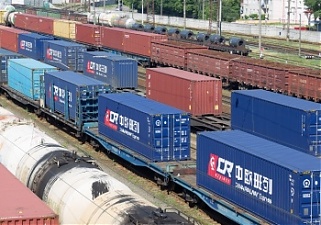Cargo, China, Direct Speech, Education and Science, Estonia, EU – Baltic States, Transport
International Internet Magazine. Baltic States news & analytics
Tuesday, 06.01.2026, 21:28
Professor: Estonia may become hub for Chinese goods transit to Europe
 Print version
Print version |
|---|
"There used to be a hope that the port developments of Russia near St. Petersburg will not work and the ports of Estonia and Latvia will remain the main ports on the eastern shores of the Baltic Sea. That ship has sailed now. The infrastructure made up of multiple ports in the St. Petersburg region has been working at full capacity for years now and is being expanded. There is a direct window to the Russian market now," Nezerenko said in a press release.
She added that in addition to the obstacles raised by bad political relations, businesses no longer have a practical need to use Estonian ports for the shipment of cargoes between Europe and Russia. A new route through the Arctic meanwhile will open up a new opportunity for making use of the advantage offered by the geographical location of Estonia. "Experts are quite unanimous on the point that the new ship route between China and Europe will pass through the Arctic Ocean and that from northern Scandinavia the cargoes will be moving to the south by rail. Russia would like Murmansk and Kandalaksha to serve as the ports [for that route] in Europe, from where cargoes would move via Moscow and Warsaw to Berlin," Nezerenko said.
"The Finns are very active to have the main port in northern Norway, from where the cargoes would move to Central Europe via Finland and the Baltic countries. For that both Rail Baltic and the Tallinn-Helsinki tunnel are necessary," Nezerenko said.
According to the associate professor, now is the best time for building a new railway in Estonia. "We mostly do not think about it, but railways have a best before date too, so to speak. It is generally considered to be about one hundred years. Our present railways were built between the end of the 19th century and World War One. With Rail Baltic we can build a substantial portion of the Estonian railway network anew using largely European Union funds. That opportunity must be made use of," she said. "When China-Europe transit starts moving via Estonia, that will provide a historic opportunity to have an extreme amount of clout compared to our size. International companies already understand that potential -- significant amounts of money have come into the logistics sector of the Baltic countries from Germany and China of late. Now we must be active ourselves as well and make maximum use of this opportunity," the associate professor added.








 «The Baltic Course» Is Sold and Stays in Business!
«The Baltic Course» Is Sold and Stays in Business!

